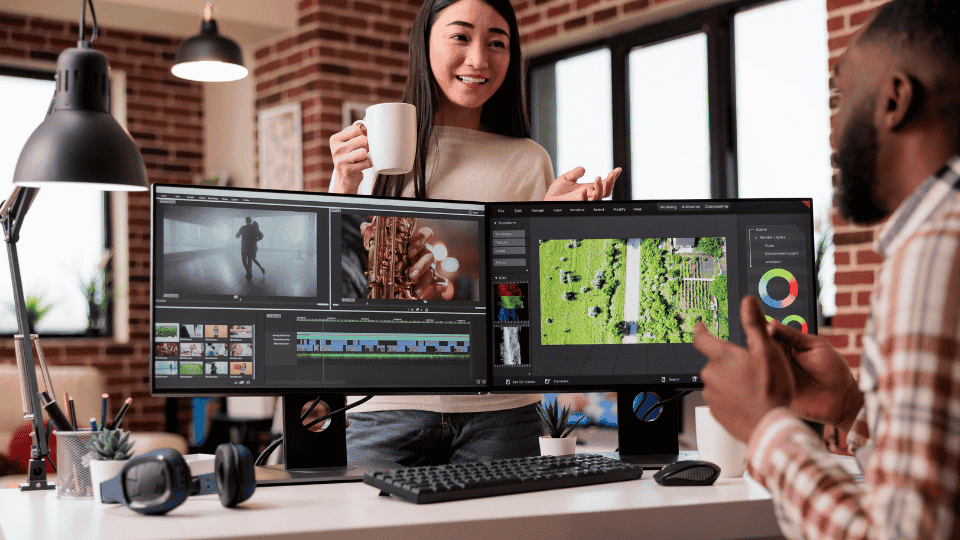Storyboarding involves more than just sketching scenes; it also involves communication and preparation. It guarantees that each step of the video production process is well considered, which makes it a vital tool for producing engaging and useful video content. At Datanext, we use storyboarding to ensure every project is successful from the start by improving the storytelling power of the films we create while also saving time and money.
1. Visualization of Concepts
Storyboarding allows producers and stakeholders to visualize the finished video before production begins. It converts the written script into visual frames that depict each scene, including the characters’ actions, camera angles, and transitions. This visualization helps everyone involved in the production process understand the director’s vision, ensuring that complex ideas are communicated effectively.
2. Facilitating Pre-production Planning
Effective planning is crucial for a smooth production process, and storyboards play a key role here. They help identify the specific shots needed, the location settings, props, special effects, and the type of lighting each scene requires. This level of detail in pre-production planning helps in organizing the shoot days more efficiently, ensuring that all necessary resources are available and time is managed effectively.
3. Enhancing Communication Among Crew
Storyboards serve as a reference point that the entire production team can use, which enhances communication across different departments such as camera operators, lighting crews, and actors. By having a clear reference, teams can work more cohesively towards a unified goal, reducing misunderstandings and ensuring that each department prepares accordingly.
4. Improving Budget Management
By detailing the shoot requirements in advance, storyboards can help producers manage budgets better. They allow for an accurate assessment of the necessary resources, helping to avoid wasteful spending on unneeded materials. Additionally, by minimizing the likelihood of requiring reshoots, storyboards can be a cost-effective tool in video production.
5. Facilitating Creative Input
Storyboarding is not just a technical part of video production; it’s also a creative process. It provides a canvas for directors, cinematographers, and other creative members of the team to experiment with different visual styles and storytelling techniques before the actual shooting begins. This can lead to more creative and innovative outcomes, as ideas can be tested and refined early in the process.
6. Streamlining Post-production
Post-production can be one of the most time-consuming phases of video production, but having detailed storyboards can streamline the editing process. Editors have a clear roadmap of how scenes are supposed to unfold and how transitions between shots are envisioned, which aligns the editing process closely with the initial vision, reducing time and effort in post-production.
Conclusion
Storyboarding is more than just drawing scenes; it’s about planning and communication. It ensures that every component of the video production process is methodically thought out, making it an indispensable tool in the creation of compelling and effective video content. At Datanext, we leverage storyboarding to not only save time and costs but also to enhance the storytelling power of the videos we produce, ensuring every project’s success from the outset.

